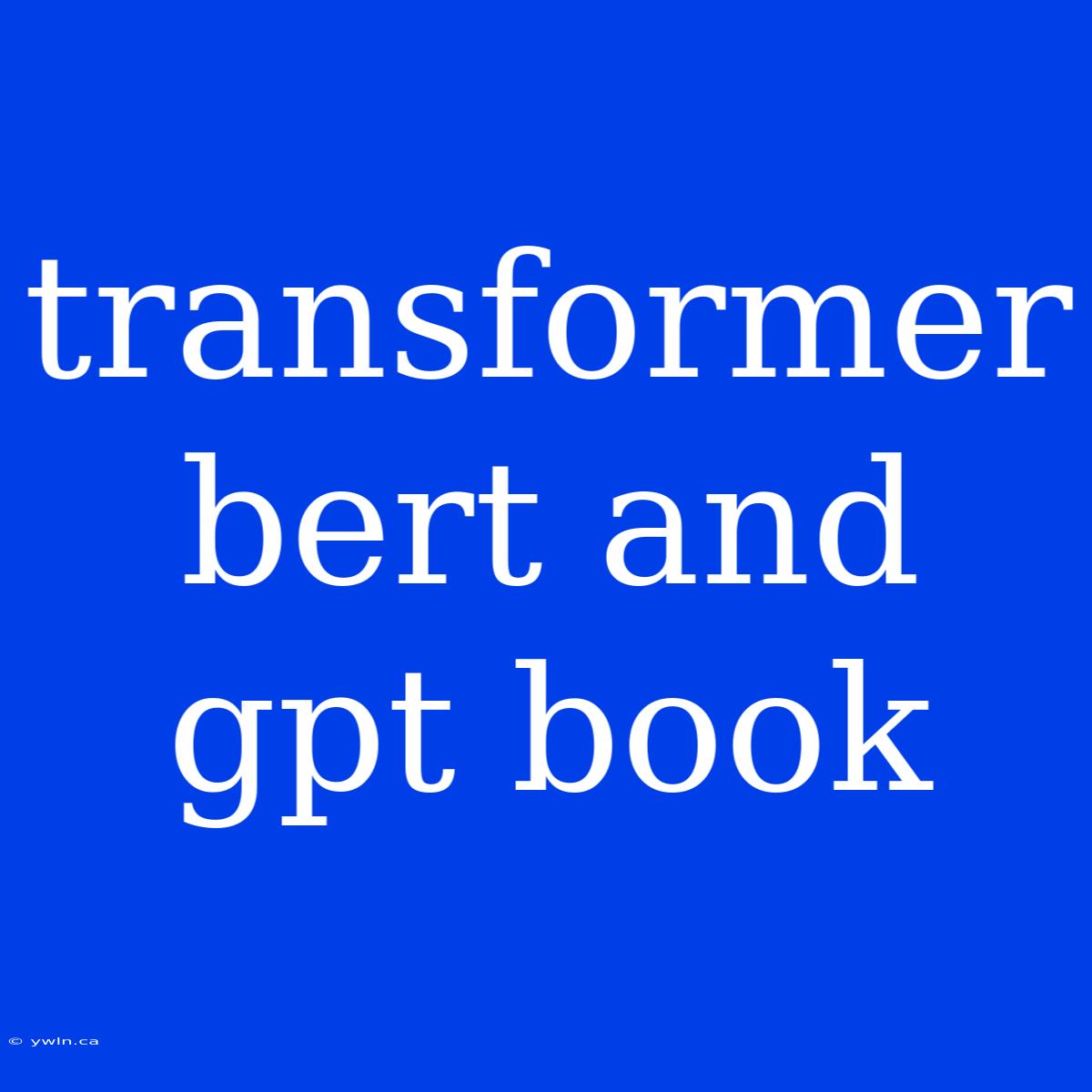Unveiling the Power of Transformers: BERT, GPT, and the Book of Deep Learning
What is the transformative power of Transformers and how do BERT and GPT fit into the book of deep learning? Transformers, particularly BERT and GPT, are revolutionizing natural language processing, enabling machines to understand and generate human language with unprecedented accuracy. This article delves into the exciting world of Transformers, exploring their significance and the unique contributions of BERT and GPT to the ever-evolving landscape of artificial intelligence.
Editor Note: This article is an essential read for anyone seeking to grasp the profound impact of Transformers on natural language processing. Understanding the concepts behind BERT and GPT is crucial for anyone interested in AI and its potential applications. This exploration delves into the history, workings, and applications of Transformers, offering a comprehensive overview of this groundbreaking technology.
Analysis: This article provides a detailed analysis of the architecture, training methods, and applications of Transformers, specifically focusing on BERT and GPT. Through careful research and analysis of existing literature and real-world applications, we aim to provide a clear and informative overview of this complex but essential topic.
Key Takeaways:
| Feature | BERT | GPT |
|---|---|---|
| Architecture | Bidirectional Encoder Representations from Transformers | Generative Pre-trained Transformer |
| Training Method | Masked Language Modeling and Next Sentence Prediction | Autoregressive Language Modeling |
| Application | Text classification, question answering, sentiment analysis | Text generation, dialogue systems, machine translation |
| Key Advantage | Excellent at understanding the context of a sentence | Skilled at generating human-like text |
Transformers: A Paradigm Shift in Natural Language Processing
Transformers have emerged as a pivotal force in natural language processing, surpassing traditional recurrent neural networks (RNNs) in performance and efficiency. Their innovative architecture, based on attention mechanisms, enables them to capture long-range dependencies within text, leading to significant improvements in various tasks.
BERT: Mastering Language Understanding
BERT, standing for Bidirectional Encoder Representations from Transformers, is a groundbreaking model trained on a massive dataset of text. Its unique ability to process text bidirectionally, meaning it considers both the left and right contexts of a word, empowers BERT to understand the intricate nuances of language. This makes it particularly adept at tasks like:
- Text Classification: Categorizing text based on its sentiment, topic, or intent.
- Question Answering: Providing accurate answers to questions based on given text.
- Sentiment Analysis: Identifying the emotional tone of a piece of text.
GPT: The Maestro of Text Generation
GPT, short for Generative Pre-trained Transformer, is a powerful language model renowned for its text generation capabilities. Trained on a vast corpus of text, GPT uses autoregressive language modeling, predicting the next word in a sequence based on the preceding words. This allows it to generate coherent and grammatically correct text, making it ideal for:
- Text Generation: Creating articles, stories, and poems that resemble human-written content.
- Dialogue Systems: Developing chatbots that can engage in natural conversations.
- Machine Translation: Translating text from one language to another accurately and fluently.
The Future of Transformers
The advancement of Transformers, specifically BERT and GPT, has significantly propelled the field of natural language processing. As these models continue to evolve, we can expect to see even more impressive advancements in AI's ability to comprehend and generate human language. This holds immense potential for a wide range of applications, from personalized education to automated content creation.
FAQ
Q: What are the main differences between BERT and GPT?
A: BERT focuses on understanding text by processing it bidirectionally, while GPT excels at text generation using autoregressive language modeling.
Q: Are Transformers replacing traditional RNNs completely?
A: While Transformers have shown superior performance, RNNs still have their applications in specific areas like time-series analysis.
Q: What are the ethical considerations surrounding Transformers?
A: The potential for misuse of text generation capabilities, such as generating fake news or manipulating public opinion, raises important ethical questions.
Q: How can I learn more about Transformers?
A: Explore online resources like research papers, blog posts, and tutorials on platforms like Hugging Face and TensorFlow.
Tips for Working with Transformers
- Choose the right model: Select a model tailored to your specific needs, considering factors like task complexity and available resources.
- Fine-tune the model: Customize the pre-trained model to achieve optimal performance on your specific dataset.
- Understand the limitations: Be aware of the potential biases and ethical concerns associated with language models.
Summary
Transformers, particularly BERT and GPT, have revolutionized the field of natural language processing, enabling machines to understand and generate human language with remarkable accuracy. Their advanced architectures and training methods have pushed the boundaries of AI, paving the way for exciting advancements in various applications.
Closing Message: The exploration of Transformers is an ongoing journey, filled with exciting possibilities and challenges. As research and development continue, we can expect to see even more sophisticated and impactful applications of these powerful language models. The future of natural language processing is bright, driven by the transformative power of Transformers.

